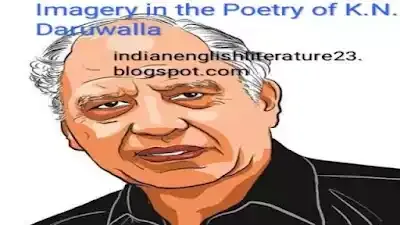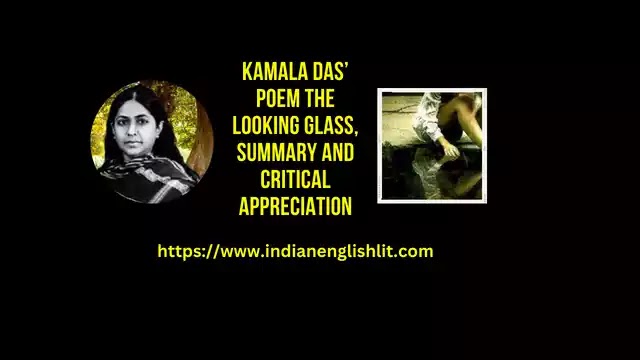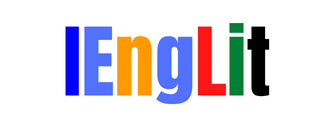 |
| Imagery in the Poetry of K. N. Daruwalla |
Introduction:
Imagery is another field in which Daruwalla has made a contribution to Indo-Anglian poetry. Like his themes, his imagery also covers a wide range. His imagery is neither fantastic nor commonplace. It is realistic and original, often strikingly original, and the imagery in his poetry is plentiful too. The poet is a master of the art of building up imagery, and he does not have to work hard to find the imagery for his poems. Imagery flows from his pen even as ideas and words flow from it. His imagery is drawn directly from first-hand observation or from a perception of some extraordinary aspects of real life.
Realistic Imagery in “The Ghaghra in Spate”:
"The Ghaghra in Spate" is a colourful pictorial presentation of river Ghaghra, a river in northern India, in flood. The poet minutely observes the changing spectacle of the river in full and when the flood is over. The entire description is highly picturesque and the poet skilfully uses colour words to paint the changing spectacles and colours of the river. The calm and placid watery surface of Ghaghra presents a vivid vignette of varied colours suited to changing time. In the afternoon the river seems to be a mud heap. On twilight it is "overstewed coffee'. At night the moon looks red like a maiden in menses and Ghaghra also affairs as 'a red weal across the spine of land'. All of a sudden the river is over flooded in night. It is a devastating flood. It hardly takes twenty minutes for the water to rise to a dangerous level, causing panic among the people living nearly. They are helpless and aghast. There are no lamps to light the way for place of safety. Thatched and muddy cottages crumble down and people have to take shelter on the rooftops. When the flood recedes, the river turns deceitful. It leaves behind a trail of devastation and suffering—sinking land, crumbling houses, dying fish and scorching heat.
Realistic Imagery in “Death by Burial”:
The misdeeds of the bandits have been depicted in a series of lines without any pause and even without any mark of punctuation. The daughter-in-law is raped; the ear-rings of the women are snatched away, causing their ear tips to bleed. A mother is tortured till she tells the bandits where the money lies hidden; it lies in the haystack. The bandits make off with their loot, without disturbing the Baba: More imagery follows when, during the dark place of the moon, there is an outcry in the village because of another raid by the thieves. However, the situation this time takes a different turn, and the burglars are captured because the one weapon, namely a pistol with which they could have scared away the villagers, does not rise to the occasion. The imagery becomes even more vivid and striking when the beating given to the captured thieves is described. Lathi blows are showered upon their backs, and a lathi blow coming down from a thief's back is most aptly pictured as a curve being completed on the shrinking body of the victim.
- Must also read: Themes in the Poetry of K.N. Daruwalla
Vivid and Realistic Imagery in “Rumination”:
The imminent violence is compared to the 'lash' oncoming rain. The smell of this violence is present in the air and is 'poised like a cobra'. The snake-imagery continues with the poet saying that he is prodding rat holes to look for a cobra which might suddenly raise its hood and show its eyes full of the malice which is characteristic of a snake. The imagery of the dead bodies giving out a foul smell, when kept in the mortuary for too long, is even more graphic and more repellent. Neither rose-water, nor flowers, nor the burning of incense-sticks can drown the foul smell which comes from the decomposed dead bodies. The smell of the flowers mingles with the stinking smell coming from the dead bodies; and a feeling of nausea overpowers a man who enters the mortuary or even stands in the verandah outside.
Striking Imagery in “The Beggar”:
The beggar just sits there, while time circles round him like a kite (which circles round a dead body or a dying body). He sits there, with the same unchanging, tired light in his eyes. And then we come across a most striking and unusual picture:
"Maggots, moments, wormsCrawl like changing seasonsHe is a straw Buddha with sperm."
Elaborate Imagery in “Death of a Bird”:
In this poem, there is the imagery of the mass of clouds piled on the crags, and then of a pony losing its balance and falling down a thousand feet below into the roaring river. Then we have the audio-imagery in a passage which describes the jungle-sounds coming supposedly from jackals, wolves and bears. Next, there is the imagery of a fire being lit with turf and peat to provide some warmth to the woman who is accompanying the hunter.
- Must also read: Characteristics of K.N. Daruwalla's Poetry
Imagery in “Pestilence”:
This poem is most remarkable so far as its imagery is concerned. Here again the whole poem is a series of images but as an example we may confine our attention to the lines which bring before us the pictures of frail bodies, frozen bodies, delirious bodies, but no henna-smeared bodies of brides. Some of these bodies have been drained completely of energy; some seem to be moving a bit; and others lie supine, transfixed under the sun.
Authentic Imagery in “The Epileptic”:
In the poem entitled “The Epileptic,” we have an example of unusual but authentic imagery. We have heard about epileptics having sudden fits of epilepsy; but not many of us have actually witnessed such an occurrence in a street. This poem depicts the victim of an epileptic fit, but it also depicts the rickshaw-puller who is experiencing a sense of guilt, the husband who is trying his best to help the woman, the inquisitive crowd of people who have gathered round the unfortunate woman, and the strictly professional attitude of the doctors. In this way, we have a series of pictures; and all the pictures together build up a wonderful, though painful, poem.
Realistic and Authentic Imagery in “Crossing of Rivers”:
In the poem entitled Crossing of Rivers, much imagery has been presented through the use of metaphors. For instance, the river 'coughs' and 'eddies' and 'converses with the mud'. The waters are placid, and glassed with green moss'. Then there is a picture of a young man jumping into the water and finding himself in great danger. The young man's head is rising above the surface of the water, and then sinking below it, alternately, till a fisher-girl comes to his rescue. Here too we have imagery which is changed with emotion.
Imagery in “The Unrest of Desire”:
In the poem entitled The Unrest of Desire, the idea expressed is an abstract one; but much concrete imagery has been used in the poem. Eyes manifesting the unrest of desire; a mask being thrust upon a face; the salt-blood being probed with an insistent tongue; a desire being pressed down with the weight of cement slabs or coils of bones; bison and stag being traced on a wall with charcoal-all these are concrete pictures build up in which the poet has used metaphorical language.
- Must also read: Satire and Irony in the Poems of Keki N. Daruwalla
Imagery in “The Hawk”:
The Hawk is remarkable for many highly suggestive and picturesque images : "a frustrated parricide on the kill", "the fuze of his hate was burning skill", "a rapist in the harem of the sky", "those black dregs in the cup of his hate". "a scribble on the page of death" and "the doves will look up for clouds and it will rain hawks."






